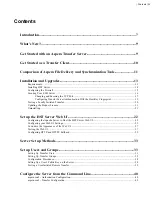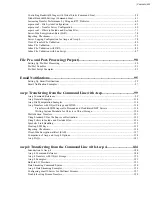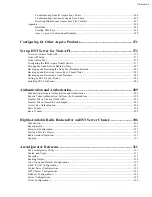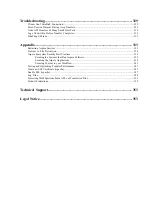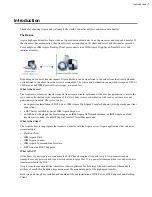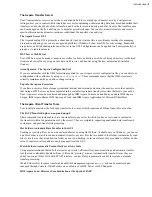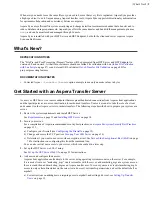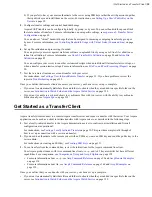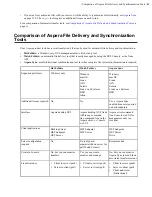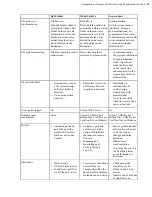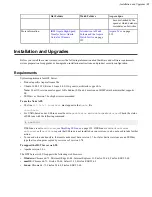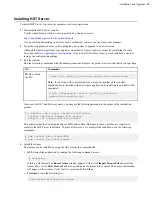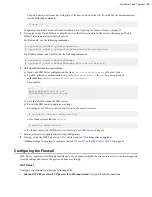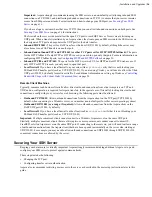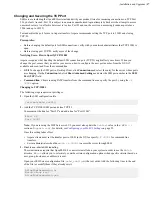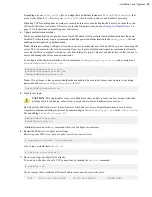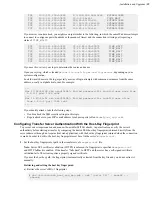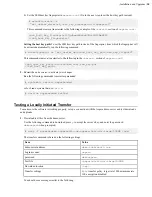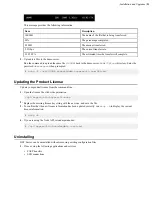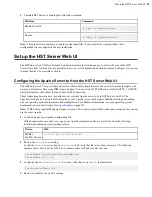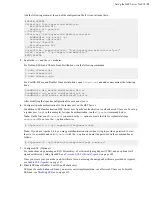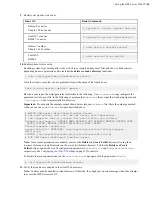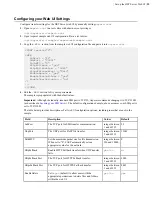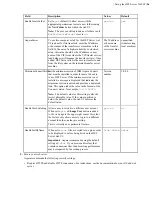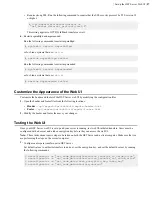
| Comparison of Aspera File Delivery and Synchronization Tools |
12
Hot Folders
Watch Folders
Aspera Sync
File delivery or
synchronization
File delivery:
Files and folders added to
or modified within a Hot
Folder on the source are
automatically sent to the
destination folder. Files
deleted from the source
are not deleted on the
destination.
File delivery:
Files and folders added to
or modified within a watch
folder on the source are
automatically sent to the
destination folder. Files
deleted from the source
are not deleted on the
destination.
Synchronization:
All file system changes
(additions, deletions,
and modifications) are
synchronized from source
to destination (push or pull)
or synchronized between
source and destination
(bidirectional).
File system monitoring
Windows operating system
notifications.
File system snapshots
collected by asperawatchd.
• In continuous mode:
file system notifications
• In scan (on-demand)
mode: Aspera Sync
scans the file system
on the source side
and compares it to the
Aspera Sync database
• asperawatchd
Transfer schedules
• Immediate (as soon as
a file system change
in the Hot Folder is
detected)
• On a user-specified
schedule
• Immediate (as soon as
a difference between
snapshots is detected)
• Immediate (in
continuous mode
or when using
Aspera Sync with
asperawatchd)
• On a user-specified
schedule (Aspera Sync
run as a cron job)
Growing file support
No
Yes (on HST Server)
No
Database space
requirements
None
At least 2 GB free per 1
million files, 3 GB free per
1 million files on Windows
At least 2 GB free per 1
million files, 3 GB free per
1 million files on Windows
Best for
• Automatic push and
pull delivery with a
simple GUI interface
that does not require
Console
• Automatic push and
pull delivery with a
simple GUI interface
that does not require
Console
• Managing and
monitoring push
delivery through
Console
• Precise synchronization
between two endpoints
of all file system
changes (including
deletions)
• Bidirectional
synchronization
• Very large file sets - up
to 100 million items
across thousands of
directories
Limitations
• Windows only
• GUI must remain open
• In pull mode, pull files
even if they are in use
• Transfer rate of millions
of small files can
become limited by the
speed at which database
metadata can be written
• Continuous mode
available only for
Windows and Linux
sources
• Transfer rate of millions
of small files can


